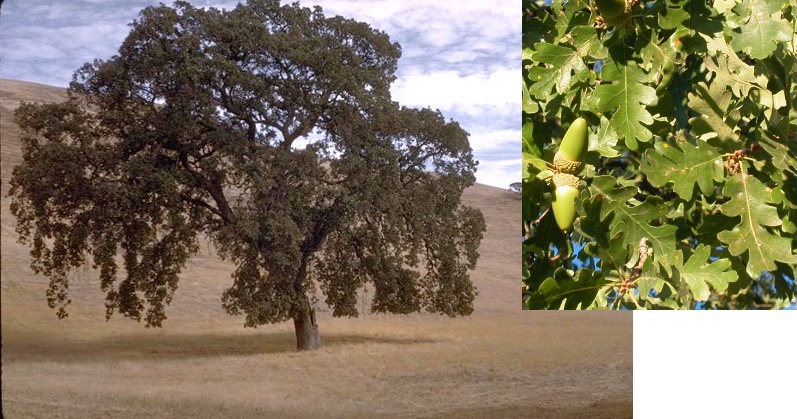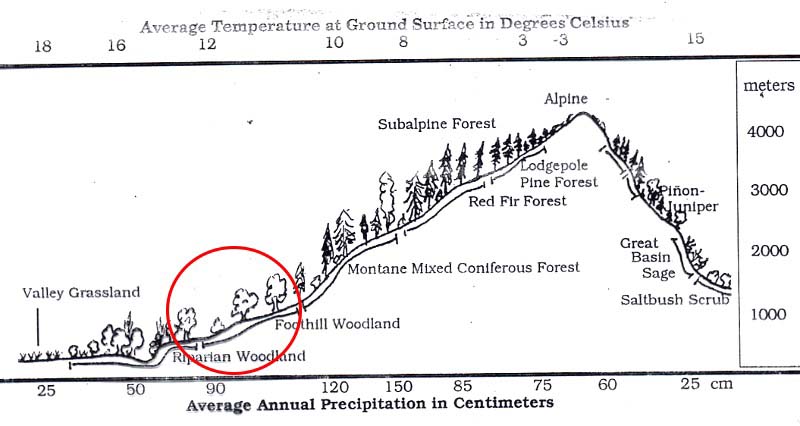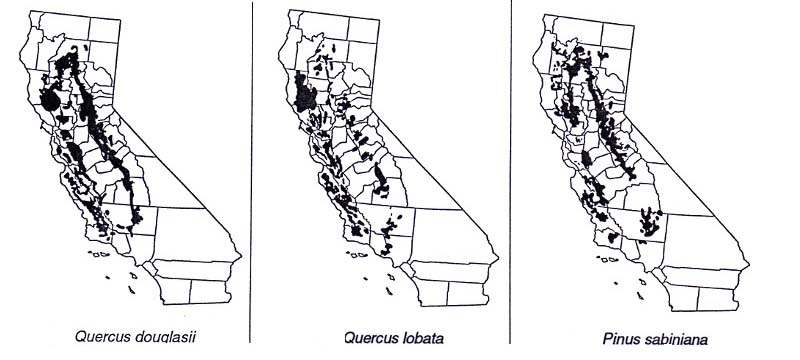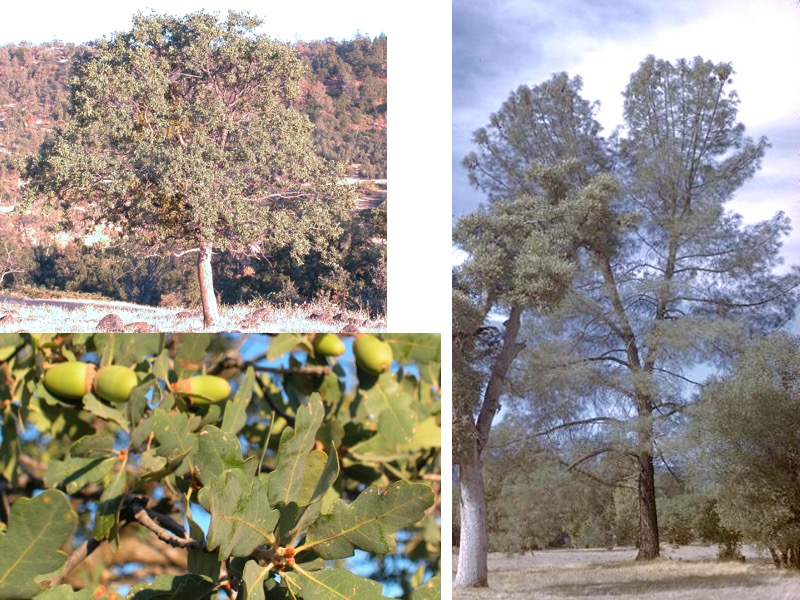Oak woodlands of California
California has 21 native oak species, and even more native oak taxa if you include recognized varieties. Over half of these species are endemic to the California Floristic Province.
In some places, oaks are the dominant species, forming oak woodlands or forests.
Coast live oak
Coast live oak, Quercus agrifolia, is a common species in the coastal regions of central and southern California, extending down into Baja. "Live oak" refers to an evergreen oak. The leaves of Quercus agrifolia are evergreen, sclerophyllous, cupped, and spiny-toothed. Several places in California derive their names from the Spanish word for live oak (encina or encino). In most of California, the tree that early Spanish missionaries and settlers identified as live oaks and named places after were trees of Quercus agrifolia.

Valley oak
Valley oak, Quercus lobata, is endemic to the California Floristic Province, and is found only in the state of California. It is a deciduous species with lobed leaves that are dark green on one side and paler underneath. It used to form extensive riparian forests along the rivers of California's Central Valley. Few remnants of those forests remain. They were logged to provide firewood for early urban areas, such as San Francisco, and were cleared for agriculture. Quercus lobata is still common in California, primarily as a component of foothill woodland (discussed below).

Foothill woodland (oaks and pine)
Foothill woodland is dominated by two tree species that are endemic to the California Floristic Province and the state of California. These are blue oak, Quercus douglasii, and foothill pine (a.k.a, digger pine, gray pine, or ghost pine), Pinus sabiniana. Both species have glaucus leaves, giving their surface a milky-white overcoat. The milky cast to the underlying green leaf gives Quercus douglasii its common name (blue oak). Similarly, the glaucus needles of Pinus sabiniana give that species its alternative common names, gray pine or ghost pine. Valley oak (Quercus lobata) exists on lower slopes and valleys within the foothill woodland, while the more drought-tolerant blue oak tends to occupy the drier upper slopes and ridges. Like Q. lobata, blue oak is winter deciduous. Blue oak is also facultatively drought deciduous, losing its leaves during summer when drought becomes more severe than normal.
The foothill woodland rings the central valley and covers much of California's coastal ranges. On the slopes of tall mountains, it lies below the elevation of montane pine forests.


